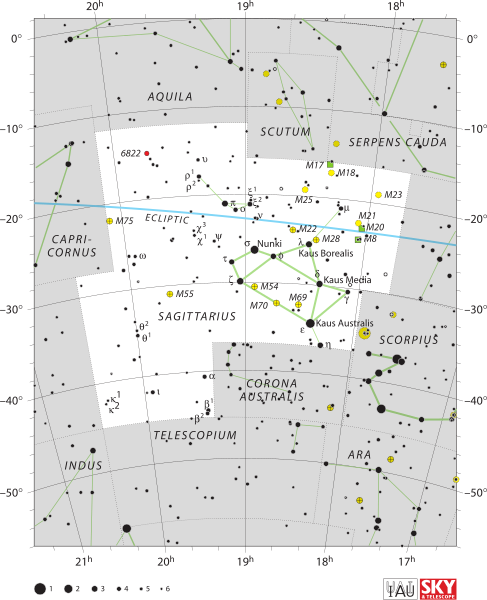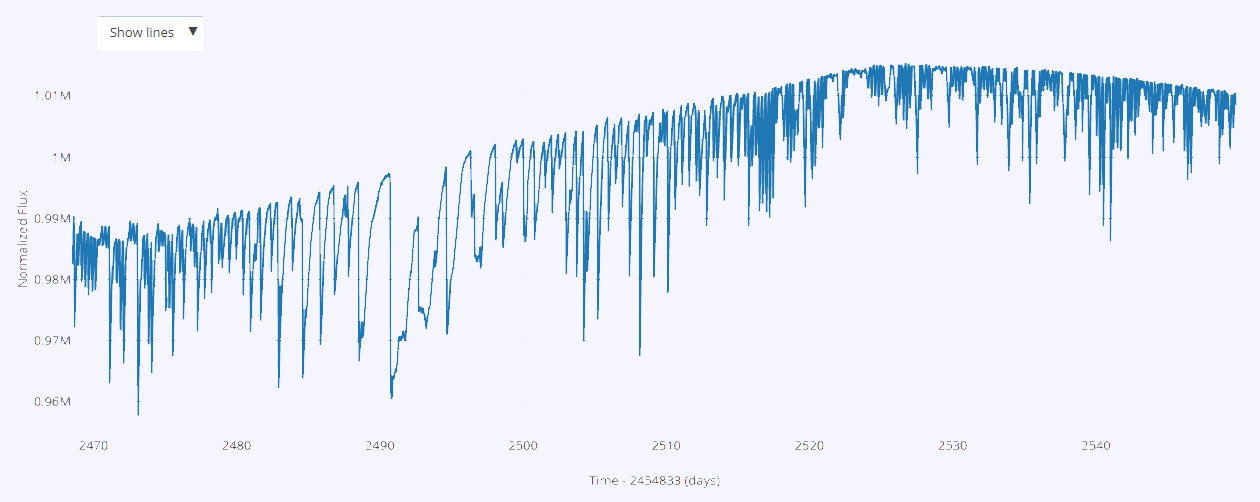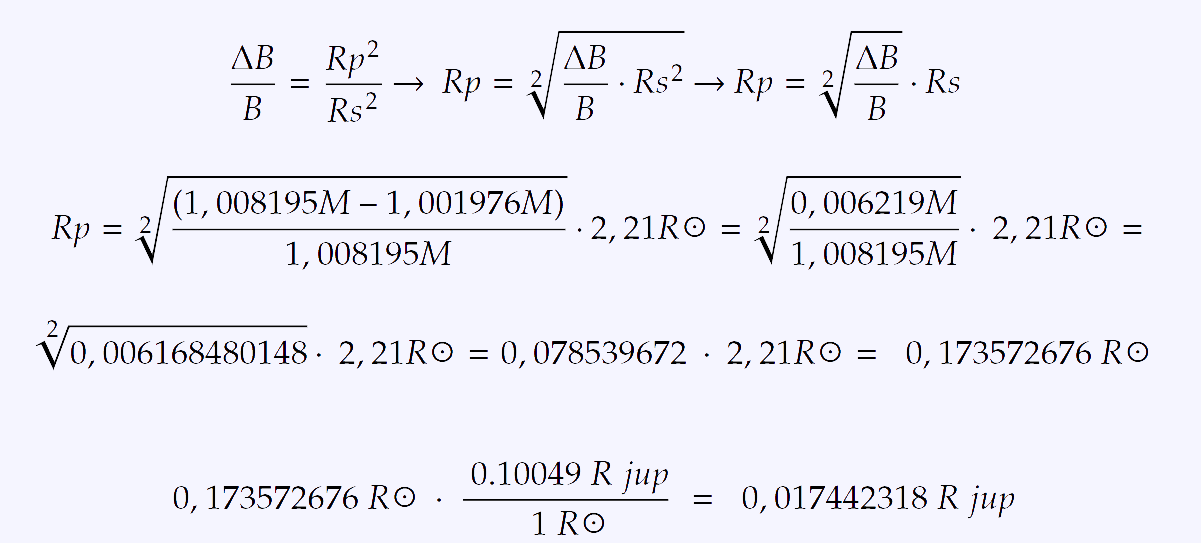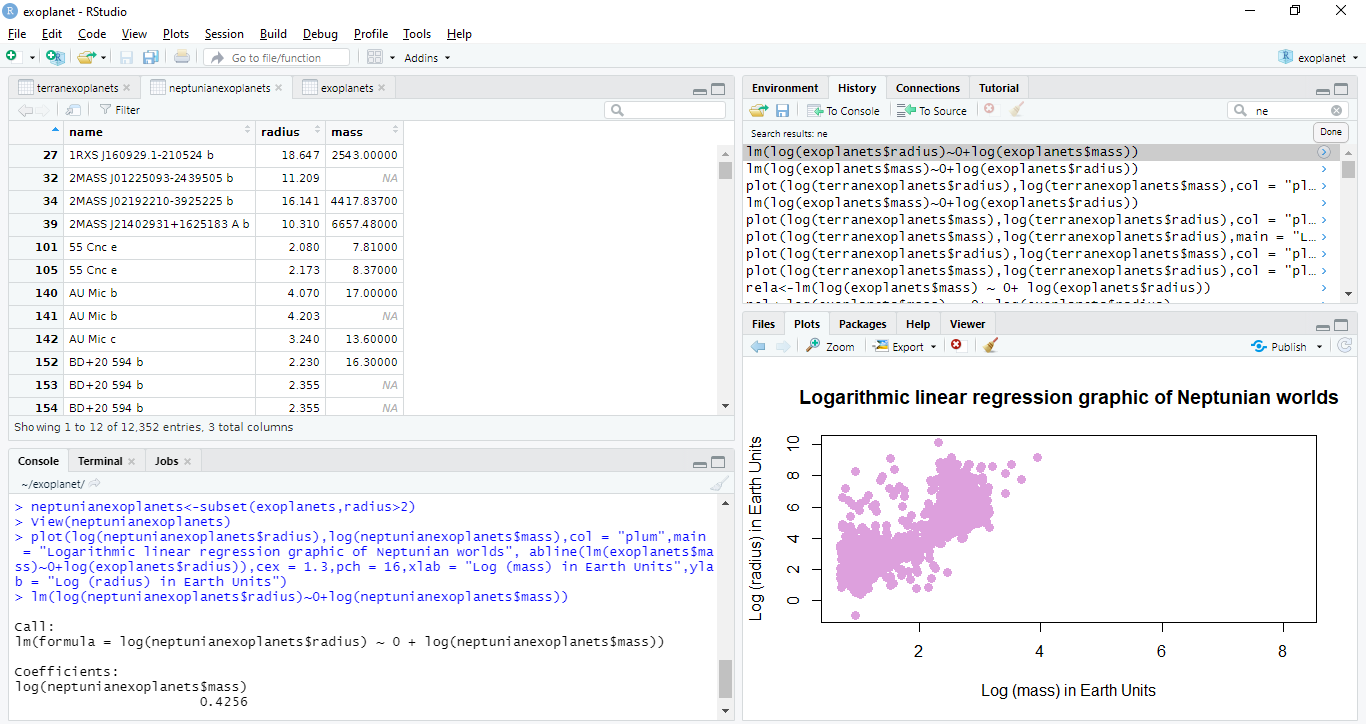HATS-12 b
HATS-12 b is an extrasolar planet that orbits the star HATS-12 in the constellation of Sagittarius. The star is located 3199.56 light years or 980.97 parsecs from the Earth based on the latest parallax records. It is a transiting hot Jupiter that was discovered by the HATNet Project on April 29, 2009.
Calculation of the radius
The coordinates of this exoplanet are RA 19h16m48.58s and Dec -19d21m21.32s, in the sexagesimal system.

Light curve calculation results:

Calculation of the Radius. We are going to use the units Jupiter Radius (R Jup), because it is a Hot Jupiter exoplanet so that, it is better to compare its radius to Jupiter.

As we have worked on base 1, now we have to multiply the result by a hundred. So then, the result is that HATS-12 b has a radius of 1,744 R Jup, approximately.
Now, searching weather the data is the same as the scientific articles at Scholar Google, we obtain that this data, approximately, corresponds with M. Rabus et al. The Astronomical Journal, Volume 152, Number 4 in which it is said: "For HATS-12b, our measurements indicate that this is a (...) 1.35±0.17 RJup planet in a circular orbit.".
Moreover, searching this data at Exoplanet Data Archive NASA-CALTECH we found that this value is 1.35±0.17 R Jup. The difference between our result and these values is probably due to the approximations made during the calculation.
Calculation of the mass
The calculation of the mass can be made from the calculation of the slope of the linear regression graphic of Terran worlds.
For the calculation of the mass, it has been used our own radius data obtained previously and the radius data obtained by scientists.

We obtain that the result is that HATS-12 b has a mass of 1184 M⊕.
According to Daniel Johns et. al. Article "HATS-12 b has a mass of 2.39 ± 0.087 M Jup".
The data obtained is obviously invalid, because, as its mass is greater than 2 M⊕ it is not a Terran world. So the linear regression graphic is not the one in which we had calculated the slope used for the calculation of this mass.
Calculation of the slope of the linear regression graphic of Neptunian worlds:
